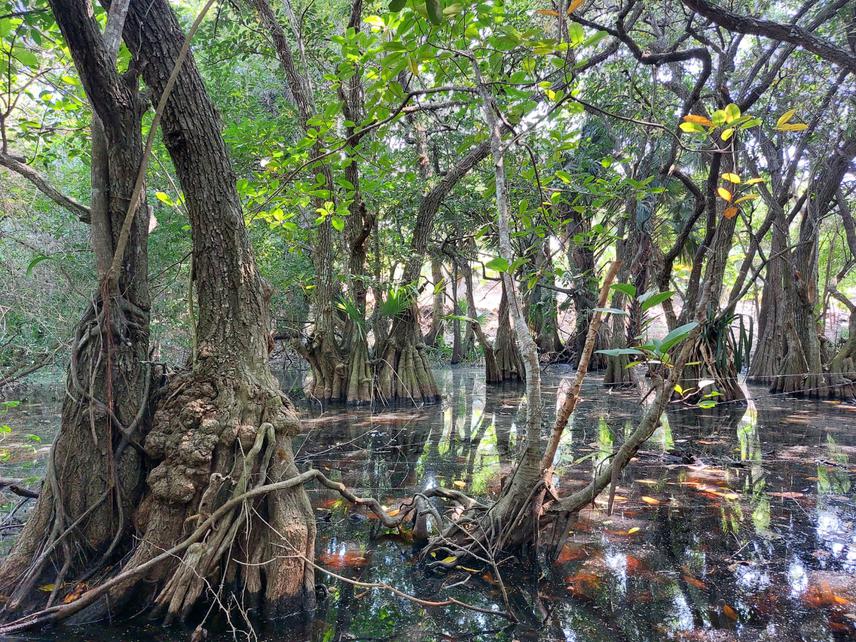Edgar Abel Sánchez García
The climate change and sea level rise are a threat for coastal wetlands. The rates of sea level rise have accelerated since the late 19th century, an increase in acceleration is expected. Given these, a possible response of coastal ecosystems is inland migration; however, a factor that limits this migration is the existence of rigid barriers in the coastal zone, such as dikes, roads, cities, or topographic elevation, which has been called "coastal squeeze". The Mexican Atlantic coast is particular vulnerable due to their coasts are low-lying sandy shorelines with extensive adjacent wetlands. Therefore, the assessment of the coastal zone and wetlands is essential to determine its vulnerability.

Freshwater swamp dominated by Annona glabra in La Mancha and Llano Ramsar Site. © Edgar Abel Sánchez García.
This project will be carried out a regional level in Mexican Atlantic coast and a local level in three wetlands complexes. The length of the Mexican Atlantic coastline is 3117 km, and includes the states of Tamaulipas, Veracruz, Tabasco, Campeche, Yucatan, and Quintana Roo. The wetlands complexes (Cienaga del Fuerte Protected Natural Area, La Mancha and Llano Ramsar Site, Alvarado Lagoon System Ramsar Site) are in Veracruz state and have some category of Protected Natural Area (PNA).
The aims are to developed knowledge about potentially floodable areas on the Mexican Atlantic coast; to determined inland migration potential of coastal wetlands; to modelled potential future distribution of dominant species in the face of climate change and sea level rise; and to evaluated increase in flooding and salinity on seed banks and wetland plants.
From this project, maps and information will be generated in order to establish sites of ecological importance that could serve as biological corridors of coastal wetlands given the rise in sea level, sites vulnerable to coastal squeeze, the possible change in the distribution of dominant wetland species in response to climate change and rising sea levels, and the impact by increase flooding and salinity in germination and seedling establishment of wetland species. The information generated will be presented with government and local communities through workshops, talks, and infographics.
Header: Mangrove dominated by Rhizophora mangle in Alvarado Lagoon System Ramsar Site. © Edgar Abel Sánchez García.